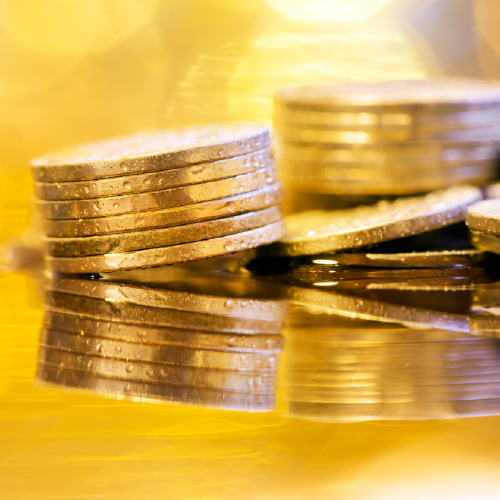Based on the knowledge that investors have at a given moment, they always make prices with a certain expectation about the future. For example, currency rates are the macroeconomic prospects of a country or region, and the price paid for shares usually implies an expectation about future earnings and sales development.
Professional market parties closely follow the financial news and continuously process new information, including economic forecasts and other expectations. Based on this, the market arrives at an average expectation for a share or currency pair’s price development. In our case – the dollar versus euro.
Specifically, they are subject to (measurable) underlying interest rate differences, inflation, unemployment figures, trade, and capital flow for exchange rates. Simultaneously, a large part of the pricing is also related to ‘event’ risks that cannot be gauged in advance and changing market sentiment. Let’s go more in-depth in this Euro to Dollar forecast.
History of the EUR/USD Pair
The Euro (EUR) is a fairly young currency that was born in 1999. The single European currency has replaced a whole galaxy of the EU countries’ national currencies: The Deutsche mark, the French franc, the Italian lira, and others. Therefore, one of the euro’s features is its susceptibility to macroeconomic statistics of the entire Eurozone and individual EU countries’ indicators.
The European currency was officially introduced into non-cash circulation on January 1, 1999, and on January 1, 2002, banknotes and coins were introduced into cash circulation. In terms of the volume of use in international payments, the euro is second only to the US dollar. It is also the second most popular (after USD) reserve world currency. At the time of the official start of trading, the EUR/USD rate was in the 1.1800 area.
Since the beginning of trading in 1999, the EUR/USD pair has undergone significant changes. In the first two years, the euro’s prospects were still vague, and the quotation was declining, reaching a minimum of around 0.8200. The pair then rallied for seven years, reaching an all-time high of 1.6000 in 2008. In subsequent years, due to the banking crisis’s influence and various problems in the Eurozone, the pair corrected significantly.
To check how has the rate of EUR/USD changed over time and EUR/USD current price, please follow this link to the extended historical price chart.
Sharp Moves of the Dollar in 2020
In terms of market sentiment, 2020 has been a very illustrative year. During the first coronavirus wave in March, the market was unpleasantly surprised by the severity, magnitude, and impact of the coronavirus pandemic, causing investors to flee to the dollar as a safe haven.
Initially, the coronavirus was thought to be “a Chinese problem only.” Still, as the virus began to spread faster worldwide – locking up economies around the world – the dollar exchange rate was recalibrated in no time.
A similar revision took place three months ago but in the opposite direction. When pharmaceutical company Pfizer released positive vaccine news in early November, the dollar fell in value due to the disappearance of the need for a safe haven.
In both cases, the market reaction was apparent, but that is not always the case. Take the announced financial support packages from the European Central Bank (ECB) this year. Whereas in the past, the availability of more euros often caused downward pressure on the euro, such packages resulted in an upward price movement this year.
Coronavirus support was “suddenly” perceived as positive by the market. According to investors, the ECB showed it was doing everything it could to prevent companies from collapsing and safeguard employees’ jobs.
Precisely because of the occurrence of unforeseen market conditions and the sometimes-surprising market reaction to them, our starting point is that you should always take price estimates with a grain.
For example, at the end of 2018, many market parties anticipated a weaker dollar, but in 2019 the dollar picked up with the US-Chinese trade war as a catalyst. That created a lot of uncertainty, causing capital to flow to safe havens like the dollar. Such events are difficult to envision, and this was especially true in recent years with a fickle character like Donald Trump at the helm in the United States.
EUR/USD Current Rate
The current rate of the EUR/USD pair is $1.12892. Below, you can see an interactive chart from Forex in real-time:

Myanfx-edu does not provide tax, investment or financial services and advice. The information is being presented without consideration of the investment objectives, risk tolerance, or financial circumstances of any specific investor and might not be suitable for all investors.
Go to Register with LiteForex Platform
Financial Trading is not suitable for all investors & involved Risky. If you through with this link and trade we may earn some commission.



















